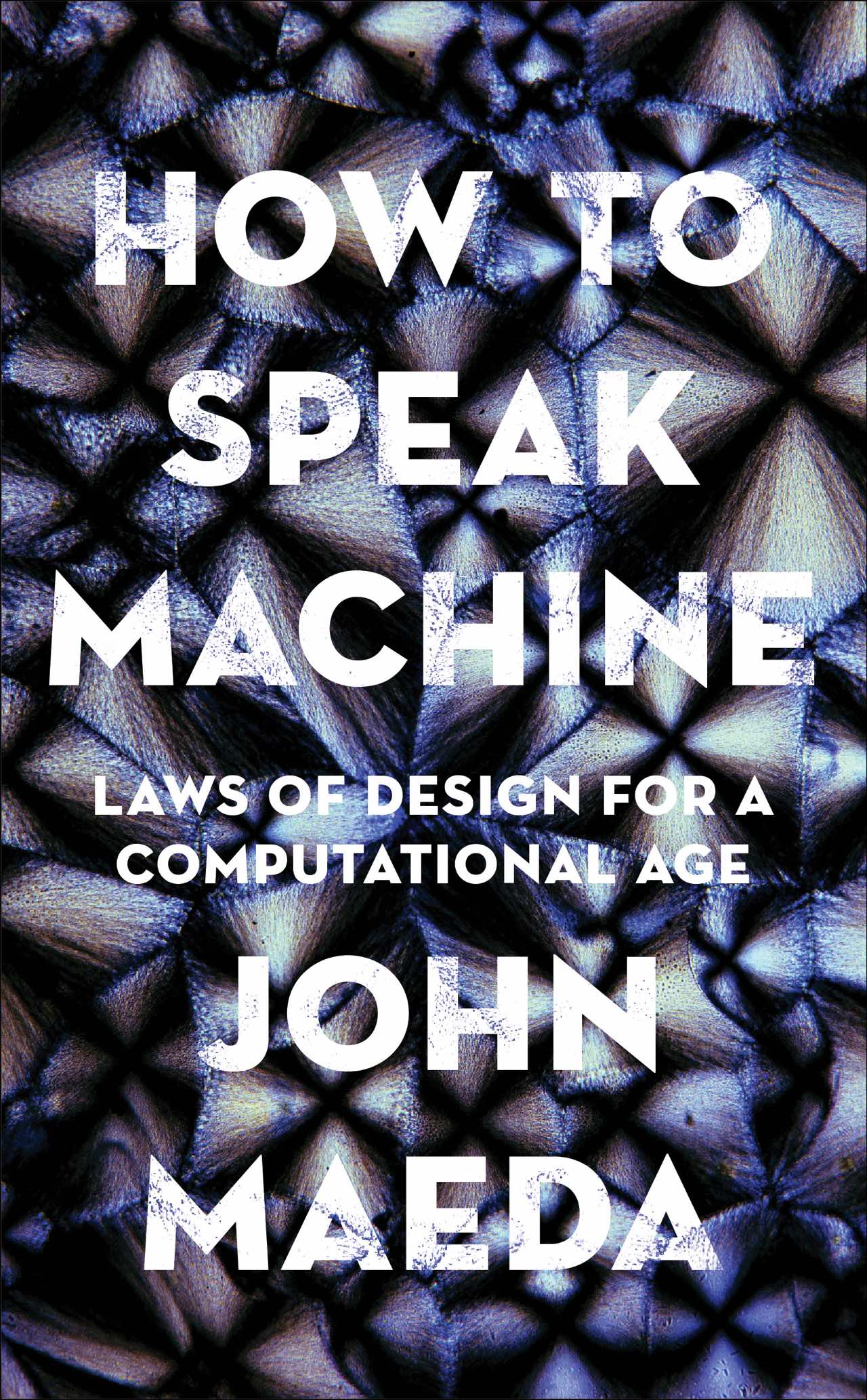From 2022 the CX Report was retired to give way for the Resilience Tech Report, available at https://resiliencetech.report
Sign up for my #ResilienceTech Briefing with no more than 2022 characters, zero images, and all in plain-text if you’re curious to learn more.

Why was it retired? Good question. I guess I could see that there was a common thread that led me through simplicity, leadership, startups, venture capital, complexity, and I found my path to the earth. And the topic of resilience. So I’m running with this new direction. It just feels right.
How To Speak Machine

I spent six years trying to figure out how to explain computation to a business-minded layperson. The net result is a book in six sections that explains the three properties of computation as a kind of “alien life form” (as David Bowie called it); the latter three sections explain why digital products are so intrinsically different than ones we knew before the Internet.
Whose site is this?
👋 I’m John Maeda and I have a new book out entitled How To Speak Machine that explains what the word “computation” means to how businesses work and operate today. Emily Chang on Bloomberg Tech gave me an opportunity to talk a little about that book.
The CX Report got started as the Design in Tech Report.
Today’s most beloved technology products and services balance design and engineering in a way that perfectly blends form and function. And as a result, over the short span of a decade there’s now a few tech industry players that tower over long established non-tech industry players — specifically the ones who have not managed to compete at the speed of Moore’s law alongside their tech counterparts. Think Amazon versus Walmart. Think Uber versus the taxi companies. Think self-driving trucks versus truck drivers. The net result is a degree of unprecedented prosperity by tech companies running at exponential speeds and with no sign of tiring. Massive computational machines working alongside the technorati have left in their wake many traditional industries that are literally dying to keep up. In March 2020, John Maeda will provide a data-driven examination for how this new reality all came to be and how it can change for the better for all players. Maeda draws upon his experience working with organizations at all scales in his careers spanning the entire lifecycle of tech, business, and design ecosystems.
How does CX relate to #DesignInTech?
Design in the technology industry, or “Design in Tech” as we’ve called it, has vastly transformed how businesses translate value into experiences. Whether in the WOW of how digital marketing can synthesize interactive, customized content at the individualized level, or whether in the “after WOW” of a digital product’s post on-boarding flow where many weeks later you whisper to yourself with proud admiration, “Wow.” Tech startups have historically had an easier journey to success in crafting both the wows and the after wows because they’ve been advantaged by building mobile-first, cloud-first, and Millennial-first. And let’s not forget that startups have little to lose when they’re starting up, so they have tremendous latitude to experiment and “fail fast.”
The ability to give consumers a holistic experience is challenging, if not impossible, when you’re bigger than a startup. Bringing design into the early phases of technology startups resulted in billions of dollars of unexpected value creation for companies like Airbnb, Pinterest, and Lyft. And for the established tech companies like Google, Microsoft, and Facebook who later invested heavily in design through acquisitions and massive talent acquisitions, their continue domination was fortified. Apple will remain unmentioned because they represent the anomaly of having started with design from startup all the way through maturity, and look where that’s gotten them.
When you’re instead a non-tech “endup” company running at full scale with thousands of people bearing the pressure of serving millions of customers, making a delightful experience will naturally end up at the bottom of your list. Why? Because so many parts of an organization need to be involved in creating and maintaining these newer, realtime integrated experiences-as-services. So there’s a need for new mindsets, new skills, new dreams, and new budgets with which a few new bets can be made. And these new directives need to have the permission to fail — which is often never really given. Because the stakes are significantly higher in endups (or “grownups”), so consciously picking bets from the high-reward/low-risk quadrant are always vital for gaining momentum.
The Design in Tech Reports
There are five past Design in Tech Reports. Learn more about them and designintech.report if you are curious about the history of design in the tech and investing ecosystem.